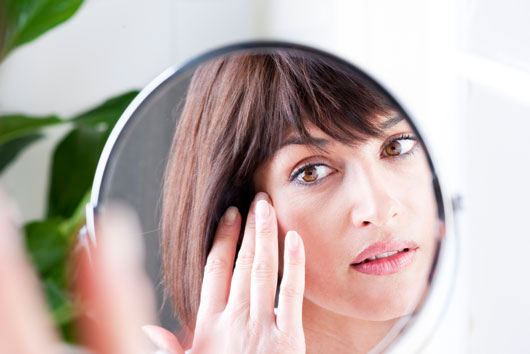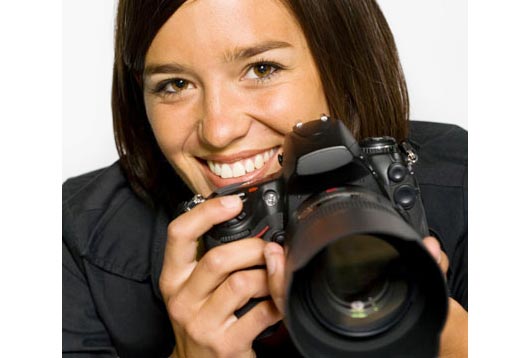
A woman walks into a supposed cosmetic surgeon’s office with a flat derriere, walks out with a new one inflated with the tire mender Fix-A-Flat and her open wounds sealed up with Super Glue. Think you’re reading horror fiction? Nope, it’s right out of today’s headlines. According to a November 21, 2011 report in the The Miami Herald, Oneal Ron Morris, the faux doctor in question, is part of a network of scam artists offering home buttocks augmentations. Apparently, the quack’s own derriere has been touched by Midas as well, described in the article as being “as big as a truck tire.”
On November 30th Terra.com reported that another of Morris’s victims came forth saying that she had injected cement and glue into a patient’s face cheeks, leaving them looking like a cross between a chimpanzee and a chipmunk.
Unchecked vanity and the economy are driving people to inexpensive and highly dangerous do-it-yourself cosmetic procedures. Not everyone can afford the expense of treatments such as Botox and wrinkle fillers like Restylane and Juvederm that can cost hundreds of dollars every time you have it done. And it’s not even permanent. There isn’t a woman out there who wouldn’t pay less for a luxury item if she could. So yes, shop the clearance racks for clothes and shoes, but when it comes to plastic surgery, never ever go the cheap route. Or else you can wind up like the 54-year-old Midwestern mother, who, in 2009, injected her own lips and cheeks with a $10 vile of silicone she purchased over the Internet. Her dreams of looking like Angelina Jolie turned freak show; when she looked in the mirror the next day she saw her face expanding like rubber, her own collagen forming scar tissue against the faulty silicone, causing crater-like blisters to erupt on her face. Aside from the risk of disfiguration, her hospital bills cost her much more than a visit to a licensed cosmetic surgeon would have in the first place.
Latinas are at risk: Latin America has always loved its full-bodied beauty queens and the U.S. entertainment industry continues to reinforce over-the-top images of extra-booty-beauty. Culturally, Latinas are more prone than non-Latinas to want a body that’s curvaceous instead of model thin. But trying to look like J.Lo when you were born with a flat tush, or what many call an ‘indigenous rear’ in the Latino community, can also cost you your life. The Orange County Register reported that there have been several fatalities over the last few years of women who have died undergoing buttocks-boosting procedures; sadly the majority of the names on the list are of Latinas. Elsa Then, who ran an illegal cosmetology practice catering to Hispanic women in the Bronx, was convicted in November in the death of 47-year-old Fiordaliza Pichardo. A buttocks augmentation at a legal clinic can cost around $5,000 – $7,000. On the black market, it’s thousands less. Certified doctors prefer to not conduct these surgeries because they are especially dangerous, leaving those hungry for a bubble butt in the unqualified hands of a potential killer instead.
OCR’s list of Latina casualties:
Elena Caro, 42, of Las Vegas, died last year after being injected with an unidentified gel in an unlicensed medical office in the back room of a tile store, police said.
Fiordaliza Pichardo of New York died of a pulmonary embolism in March 2009 after injections of silicone.
Solange Magnano, a model and former Miss Argentina, died there in November 2009 after she was injected with microspheres of PMMA plastic (polymethylmethacrilate) that apparently entered her bloodstream and caused a pulmonary embolism.
Mayra Lissette Contreras, 22, of Pacoima, Califorinia, died in July 2010, apparently from respiratory problems, after receiving silicone shots from an unlicensed injector in Sylmar, Calif.
Lidvian Zelaya, 35, of Miami, died in late 2010 while undergoing a liposuction and buttocks-injection procedure by a doctor whose license was later suspended pending an investigation. It was unclear from news reports whether she died before fat from the liposuction had been reinjected, as planned, into her buttocks.
Thinking about a cosmetic procedure? Consider this:
Before you take the plunge, know that plastic surgery requires an abundance of information to research.
• Make sure the positives of a procedure outweigh its risks.
• Be sure you are doing it for yourself and no one else
• Make an informed decision. Find out everything you can about that procedure, the qualifications of the person doing the procedure, and the facility where it is being done.
• When you choose a plastic surgeon, medical training and surgical experience are primary indicators of the surgeon’s qualifications. This separates the real doctors from the quacks.
The Consumer Guide to Plastic Surgery lists these three primary boards for researching and certifying a plastic surgeon:
•American Board of Plastic Surgery (ABPS) certifies physicians in plastic surgery of the entire body, including the face, neck, and full body. These physicians have the most stringent surgical training requirements and have the highest standards of certification for plastic surgery procedures for the whole body and face, including procedures such as breast augmentation.
• The American Board of Facial Plastic and Reconstructive Surgery (ABFPRS) certifies physicians in the field of facial plastic and reconstructive surgery. These board requirements for certification are specifically related to surgery of the face, head, and neck; especially procedures such as facelift and rhinoplasty.
• The American Board of Otolaryngology (ABO) certifies physicians in the specialty of otolaryngology and head and neck surgery.











